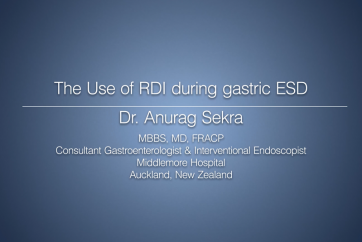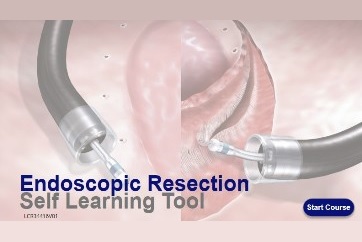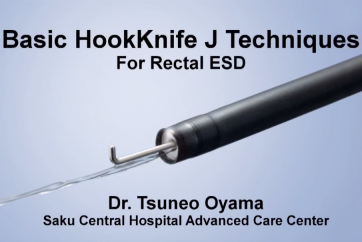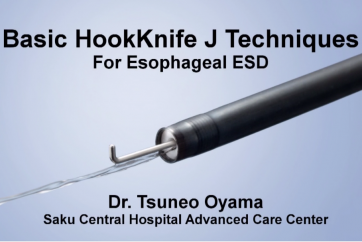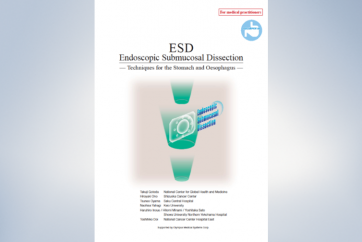Introduction
Towards the Standardisation of Colorectal ESD
Shinji Tanaka, Hiroshima University
Endoscopic submucosal dissection (ESD) is capable of en-bloc resection of lesions regardless of their size. This has not only enabled accurate histopathological examination, but also preservation of organs, already making it a standard treatment modality for early gastric cancer, particularly in Japan. ESD has also been listed as an insured treatment in Japan for superficial oesophageal cancer, as well as gastric cancer. However, ESD for colorectal cancer has not yet been established as a standard treatment modality, due to the difficulty of the techniques and because the pathological characteristics of colorectal cancer are radically different from those of oesophageal and gastric cancers. In view of this, the Working Group for Standardisation of Colorectal ESD was started as a subordinate organisation of the Japanese Gastrointestinal Endoscopy Promotion Liaison Committee in April 2006. The committee is presently clarifying the colorectal tumours for which ESD can be indicated, improving the endotherapy devices, endoscopes and ancillary equipment (focusing on those released by Olympus).
The majority of colorectal tumours are benign adenomatous lesions, and most early colorectal carcinomas have diameters of no more than 2 cm that can be resected by en-bloc EMR using a snare. Laterally spreading tumours (LSTs) are more difficult to resect with this technique. Since most granular-type LSTs (LST-G) are adenomatous even when they are large and accurate preoperative diagnosis is possible using magnifying observation, they can be cured completely with well-planned piecemeal EMR. It is important to have a good understanding of the particularities of colorectal anatomy and colorectal tumours and to avoid performing unnecessary ESD because of an inability to perform accurate qualitative diagnosis of tumours prior to the treatment. Since the colon is a long hollow organ, dysfunctions caused by local resection of regions other than the lower rectum are much less problematic than in the oesophagus or stomach, and the lower rectum can be also approved by transanal surgical resection. In large lesions the value of the ESD procedure, due to the operation time being too long, may also be questioned compared to laparoscopic colectomy.
At present, ESD can only be indicated for a small number of lesions due to the fact that the majority of colorectal tumours are adenomatous lesions. In addition, the technical difficulty of colorectal ESD is still quite high because of the difficulty in manoeuvring an endoscope with respect to the lesion, as well as the anatomic characteristics of the colon and rectum (thin wall and the presence of peristalsis, folds, bends, fecal fluid, etc.). For example, if the colon wall is perforated, there is a very high likelihood of peritonitis due to fecal fluid leakage a complication that may require surgical treatment.
Perforation of the stomach wall, on the other hand, can usually be cured with conservative management. The difficulty of colorectal ESD is determined more by how difficult the scope is to manoeuvre than by the size or visual shape of the lesion. It should be kept in mind that it is not acceptable to risk ESD in a situation where the scope is difficult to manoeuvre.
In closing, we hope that this booklet can assist the clinical studies of colorectal ESD that are being performed at an increasing number of hospitals. It is our wish that progress in ESD continues until it is standardised and that, by providing readers with the knowledge they need and discouraging them from attempting procedures that are too difficult, this booklet will support that progress by helping to prevent medical accidents that could hinder the development of colorectal ESD.
[Working Group for Standardisation of Colorectal ESD]
Shinji Tanaka
Hiroshima University
Yoshiro Tamegai
Konodai Hospital,International Medical Center of Japan
Sumio Tsuda
Fukuoka University Chikushi Hospital
Yutaka Saito
National Cancer Center Hospital
Naohisa Yahagi
Toranomon Hospital
Hiro-o Yamano
Akita Red Cross Hospital

